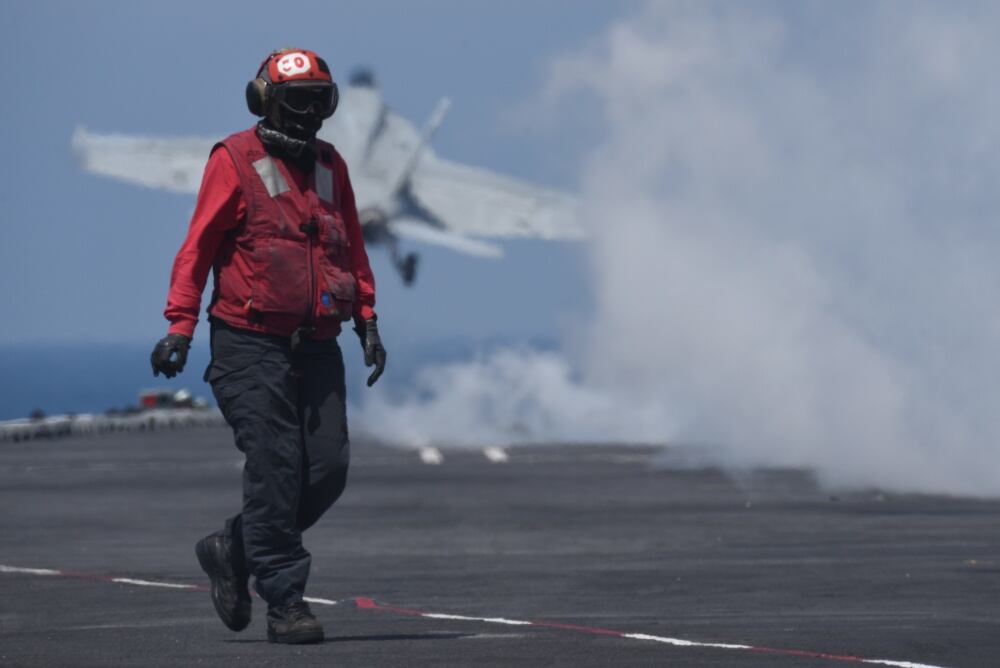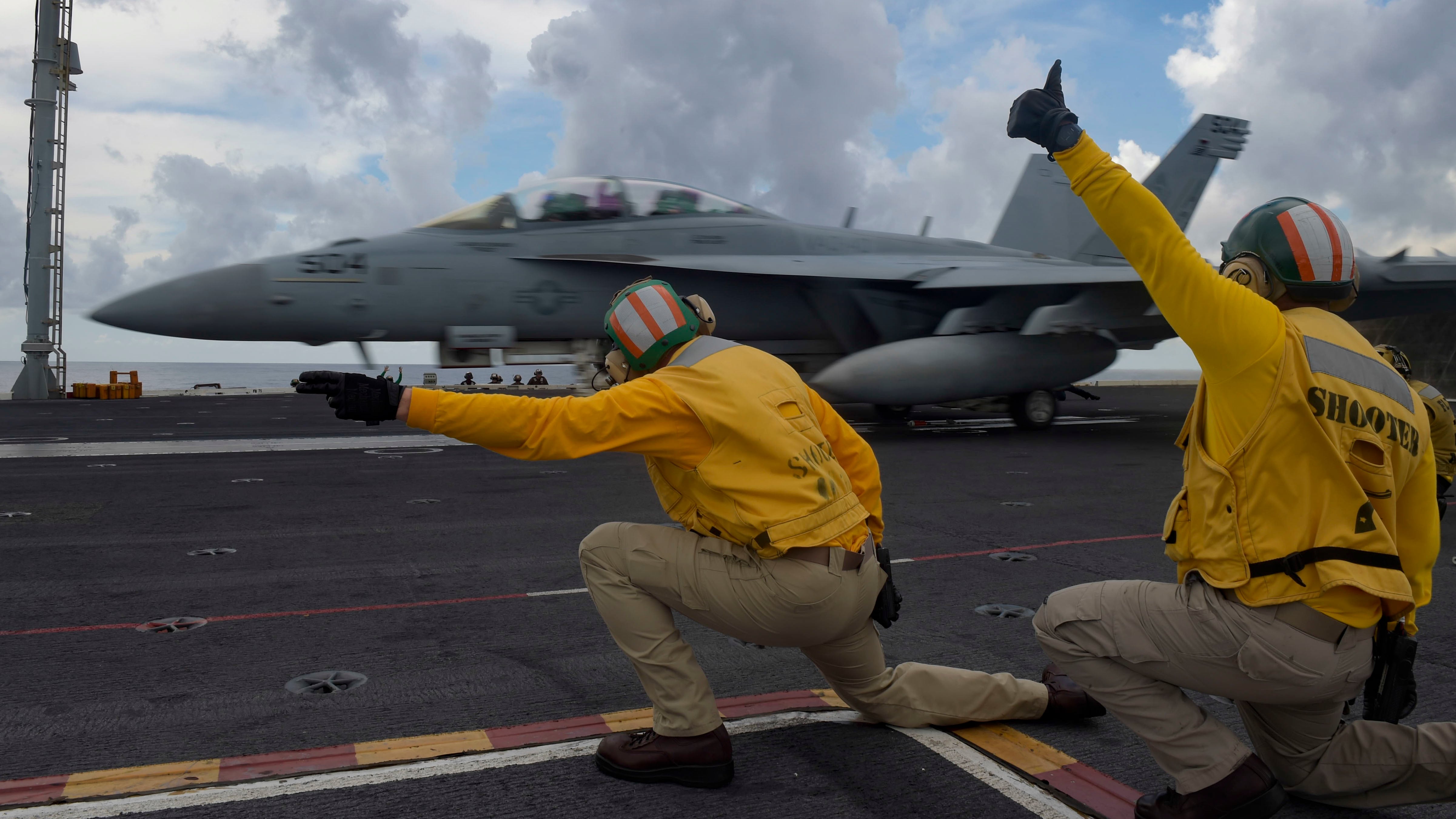Secretary of Defense Jim Mattis wanted unpredictable flattop deployments and the retired Marine four-star general is getting his wish.
With its escort warships and aircraft, the Harry S. Truman left Naval Station Norfolk Tuesday morning on a surprise rendezvous with sister aircraft carrier Abraham Lincoln in the Atlantic Ocean, less than six weeks after returning to Virginia.
The July 21 return capped a three-month overseas deployment — half the duration of the typical carrier cruise — but officials warned sailors and their families that the Truman’s likely brief stay in Norfolk was to be treated as an “extended port visit,” not a homecoming.
That’s because the carrier strike group was still perfecting what Pentagon strategists call “Dynamic Force Employment,” a concept designed to force potential enemies guess when American forces would depart and where they might travel.
The Navy spearheaded the Pentagon plan when the Truman departed Norfolk on April 11 to pound Islamic State targets in Syria.
“Since April when we began our deployment, our strike group has demonstrated our inherent maneuverability and flexibility as we took part in maritime security operations and evolutions with several key allies and partners,” said Truman strike group commander Rear Adm. Gene Black in a written statement emailed to Navy Times on Tuesday.
“Now, as we continue our deployment, we remain 100% mission-capable and ready to accomplish whatever mission we are assigned, at any time, anywhere. This exemplifies the Navy’s Dynamic Force Employment concept: we remain flexible and ready on short notice to deploy whenever and wherever the nation needs, ready to fight.”
RELATED

Navy officials say the Truman is slated to conduct carrier qualifications and “sustainment operations” in the Atlantic and participate in unspecified dual operations with the Lincoln.
Over the past several years, the Truman likely would have been slotted in Norfolk for 13 months as a “ready force” capable of redeploying if necessary.
Under the Mattis deployment concept, the Truman’s recent brief stay in Norfolk was designed only to provide routine maintenance on warships and aircraft; conduct training; and keep up required certifications.
The Norfolk-based Lincoln also is underway in the Atlantic Ocean conducting carrier qualifications.
Last week, a Hollywood crew filmed flight deck operations on the Lincoln for the sequel to the 1986 blockbuster “Top Gun.”
Lt. Sherrie Flippin, the spokeswoman for U.S. Fleet Forces Command, told Navy Times in an email that the Truman and Lincoln will conduct "complex multi-unit training to enhance interoperability, combat readiness and prepare them to deter threats anywhere around the world. "

Chief of Naval Operations Adm. John Richardson visited Norfolk on Friday to commemorate the reactivation of the 2nd Fleet, which will later exert operational control over warships, aircraft and landing forces sailing the Atlantic Ocean.
But both the Lincoln and the Truman will fall under the control of U.S. Fleet Forces Command for the upcoming operations.
Navy Times asked Fleet Forces if it’s possible that the Truman won’t return to Norfolk, instead moving on for another deployment.
“To preserve operational security, we do not discuss details or the nature of future operations. Units that recently got underway remain deployed in the Atlantic Ocean and are ready to support any mission, at any time, as directed,” Flippin said.
Black’s strike group includes the nine squadrons of Carrier Air Wing 1 — the “Red Rippers” of Strike Fighter Squadron 11; the “Checkmates” of Strike Fighter Squadron 211; the “Sunliners” of Strike Fighter Squadron 81; the “Knighthawks” of trike Fighter Squadron 136; the “Rooks” of Electronic Attack Squadron 137; the “Seahawks” of Carrier Airborne Early Warning Squadron 126; the “Proud Warriors” of Helicopter Maritime Strike Squadron 72; the “Dragon Slayers” of Helicopter Sea Combat Squadron 11; and a detachment from the “Rawhides” of Fleet Logistics Support Squadron 40.
The warships escorting the Truman are the guided-missile cruiser Normandy and the destroyers Arleigh Burke and Forrest Sherman.
Prine came to Navy Times after stints at the San Diego Union-Tribune and Pittsburgh Tribune-Review. He served in the Marine Corps and the Pennsylvania Army National Guard. His awards include the Joseph Galloway Award for Distinguished Reporting on the military, a first prize from Investigative Reporters & Editors and the Combat Infantryman Badge.





